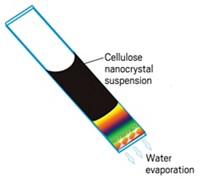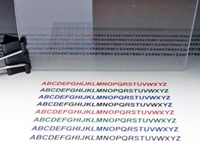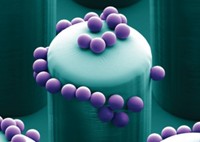Advertisement
Grab your lab coat. Let's get started
Welcome!
Welcome!
Create an account below to get 6 C&EN articles per month, receive newsletters and more - all free.
It seems this is your first time logging in online. Please enter the following information to continue.
As an ACS member you automatically get access to this site. All we need is few more details to create your reading experience.
Not you? Sign in with a different account.
Not you? Sign in with a different account.
ERROR 1
ERROR 1
ERROR 2
ERROR 2
ERROR 2
ERROR 2
ERROR 2
Password and Confirm password must match.
If you have an ACS member number, please enter it here so we can link this account to your membership. (optional)
ERROR 2
ACS values your privacy. By submitting your information, you are gaining access to C&EN and subscribing to our weekly newsletter. We use the information you provide to make your reading experience better, and we will never sell your data to third party members.
Materials
Plastic Films Pin Water Droplets Like Rose Petals Do
Materials: Researchers print nanoscale patterns into the surface of plastic films to prevent water droplets from rolling off
by Katherine Bourzac
January 22, 2014

Materials scientists often turn to the plant kingdom for ideas on how to design surfaces that trap or repel water. Some have mimicked the surfaces of rose petals to engineer nanoscale patterns that cling to water droplets. Now researchers report a simple method to print large-area, water-pinning plastic films (Langmuir 2014, DOI: 10.1021/la4034996). With a practical manufacturing method, these water-trapping films could find commercial applications, such as controlling condensation in greenhouses or liquid flow in microfluidic devices.
In the early morning, dew clings to rose petals; when the sun rises, the dewdrops act like tiny lenses, making diffraction patterns that attract pollinating insects, says Jaslyn Bee Khuan Law, a materials scientist at the Agency for Science, Technology, and Research (A*STAR), in Singapore. A drop of water will cling to a rose petal even when it’s tilted or held upside down. The petals can hold onto these droplets because their surfaces consist of closely packed conical structures a few micrometers across. These microscale surface patterns tweak the surface tension of the water droplets, causing them to cling to the petals.
Researchers first mimicked this effect by using rose petals as templates to mold water-pinning structures onto polyvinyl acetate and polydimethylsiloxane films (Langmuir 2008, DOI: 10.1021/la703821h). Others have made water-pinning surfaces by using complex methods, such as chemical vapor deposition, to carve out similarly shaped, nanoscale structures in silicon or metals. Making the features on the nanoscale enhanced the water-pinning effect.
But none of these fabrication methods are amenable to large-scale, low-cost manufacturing, preventing commercialization of the water-clinging surfaces. So Law turned to a specialty of her lab: nanoimprint lithography. This printing method utilizes metal or silicon drums molded with nanoscale features on their surfaces. When the molds are heated and pressed against sheets of plastic, the plastic is embossed with the nanoscale pattern. This roll-to-roll printing process resembles the way newspapers are printed. It’s capable of producing large-area films in a short amount of time.
Law and her colleagues set out to demonstrate that water-pinning films could be made using nanoimprint lithography, as well as to refine the nanoscale surface designs. They designed several different surfaces, created molds for each design, and then compared the water-pinning performance of polycarbonate and poly(methyl methacrylate) films made using the molds. To test the films, the researchers held them perpendicular to the ground and added larger and larger droplets of water, until the droplets slid off.

Water droplets easily slid off plastic films patterned with simple nanoscale gratings; isolated nanoscale pillars hung onto water slightly better. But the films with the best properties consisted of tightly packed cones about 300 nm tall. Plastic patterned with these structures could hold onto water droplets as massive as 69 mg. The team could print a 110- by 65-mm sheet of this plastic film at a speed of 10 m per minute. Currently, the dimensions of the films are limited by the size of the premade molds, Law says.
For nanoscale water-pinning surfaces to reach the market, they will need an economical way to be manufactured, says Mark A. Hayes, a chemist at Arizona State University. “This is one way to get there,” he says.
While the Singapore group has made good progress on manufacturing these materials, very basic, vexing questions about how water clings to these surfaces remain, Hayes says. For example, very small changes in the surface’s roughness can switch it from water-pinning to super hydrophobic, and researchers don’t have a detailed understanding of why.
Law says her group plans to both push the materials towards commercialization and study the basic physics behind these phenomena.





Join the conversation
Contact the reporter
Submit a Letter to the Editor for publication
Engage with us on Twitter